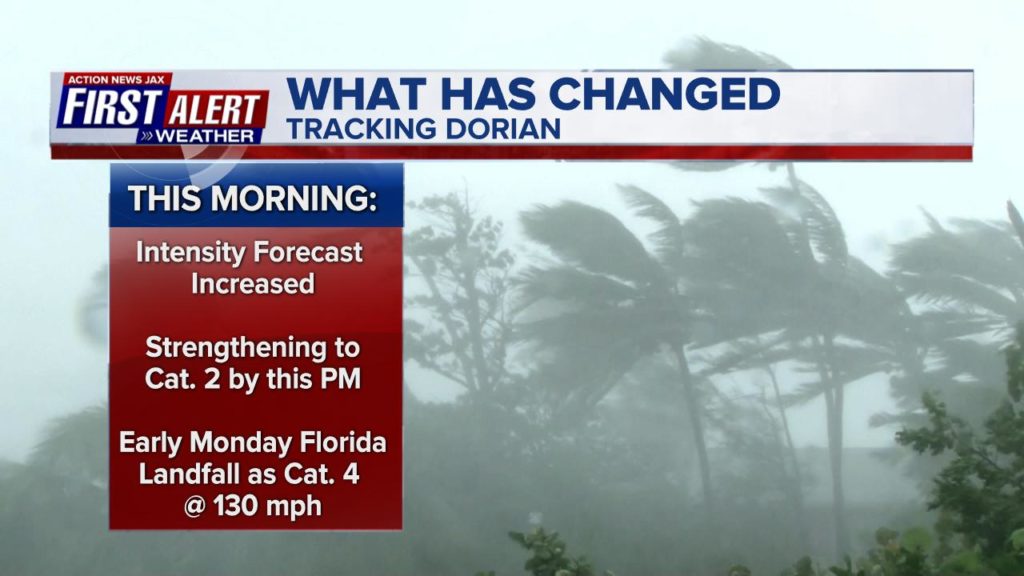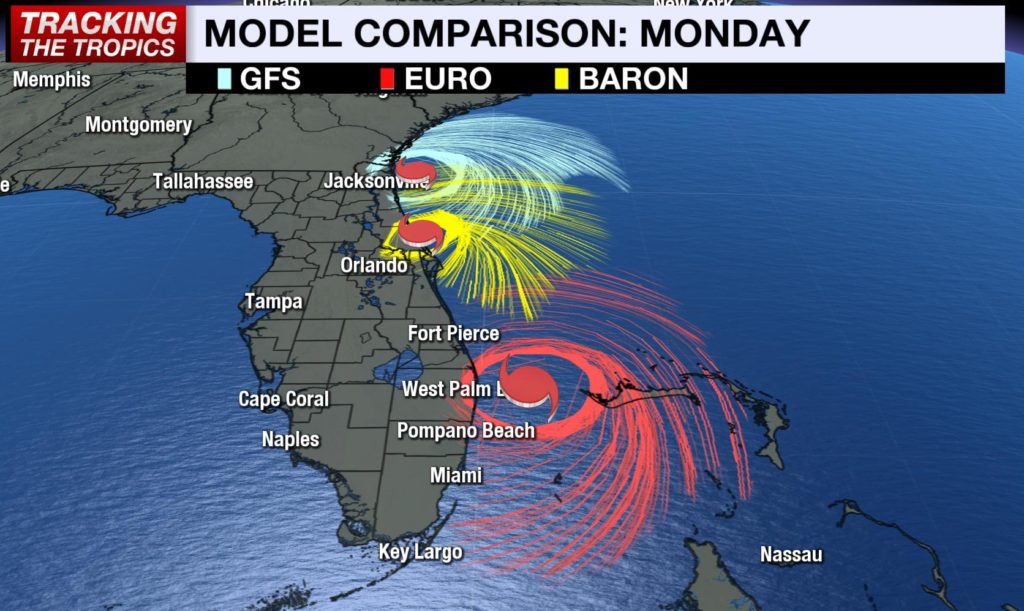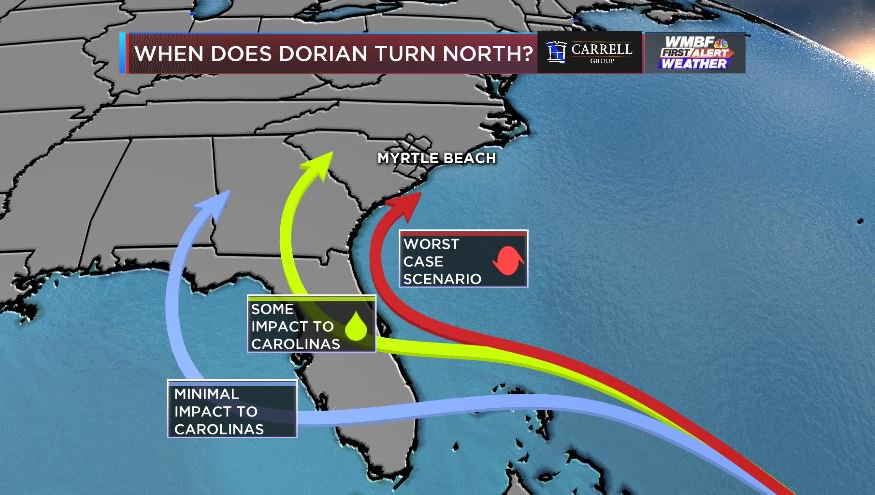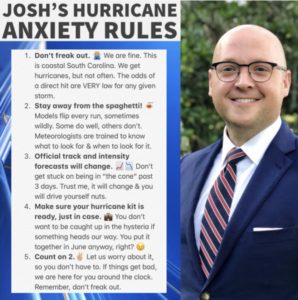Hurricane Graphics That Communicate Effectively

Even if you only follow a couple of broadcast meteorologists on social media, during hurricane season you probably see a lot of graphics showing forecast tracks. After a while, they all start to look the same.
A few broadcast meteorologists have created some innovative graphics that effectively communicate essential information. Here are a few that stood out to me when Hurricane Dorian was threatening the U.S. last year.
READ MORE: CREATIVE USE OF COMPLEX METEOROLOGICAL DATA
Hurricanes are complicated storms. These graphics work because they communicate essential details quickly and without requiring the viewer or follower to decipher the information.

A lot of broadcast meteorologists are posting graphics that highlight “The Bottom Line” and “What We Know.” Garrett Bedenbaugh from WJAX in Jacksonville, FL took a different approach and explained “What Has Changed” since the last update.
This information suggests to viewers that the details will probably change again. And it reminds them that your weather team is monitoring the storm and analyzing every aspect.

To highlight the uncertainty in the forecast track, Matt Gray from WBBH in southwest Florida used three distinct colors to show potential landfall locations for Hurricane Dorian.
A lot of broadcast meteorologists do something similar. But this graphic works because it only includes the fastest streamlines. The map is uncluttered, and it is obvious there is a lot of ambiguity in the forecast.

Jamie Arnold from WMBF in Myrtle Beach used three different colors to show three possible tracks and the various impacts on his local area, including a worst-case scenario.
One change I would suggest: enlarge the text boxes a little. Some people might have trouble reading this graphic, especially on a Smartphone. This is one time you don’t want your followers to misunderstand your message.

Finally, we all know tropical weather systems cause a lot of anxiety. Josh Marthers from WCBD took a pre-emptive strike and offered his followers some tips on how to survive days of non-stop hurricane coverage.
What makes all these graphics work is simplicity. All of them tell just one story. Even Josh’s post, which includes a lot of text, the message is direct: “Don’t freak out. Count on 2.”
Tracking tropical cyclones is a lot of hard work for broadcast meteorologists, with long hours spent analyzing the storms off-air and communicating the risks on-air. It’s often a thankless job. For those in the path of the storm, stay safe and keep up the good work.
Tim Heller is an AMS Certified Broadcast Meteorologist, Talent Coach, and Weather Content Consultant. He helps local TV stations and broadcast meteorologists communicate more effectively on-air, online, and on social media.
Read more News & Insights from HellerWeather
